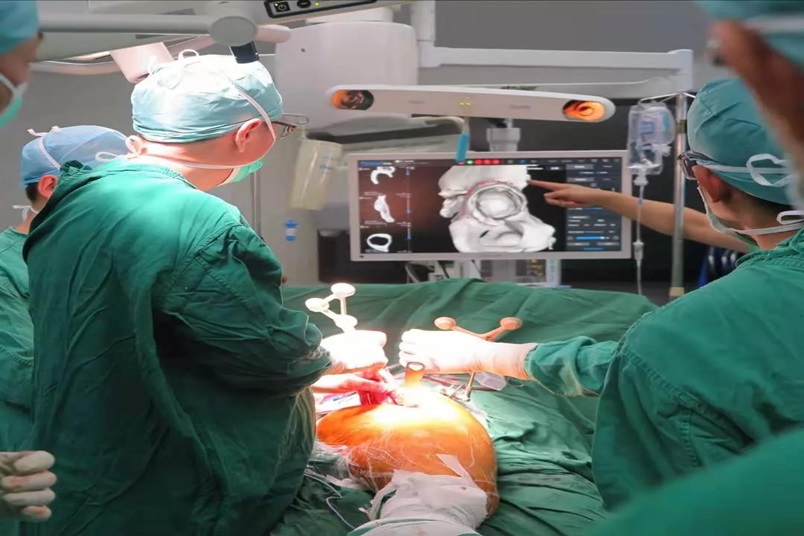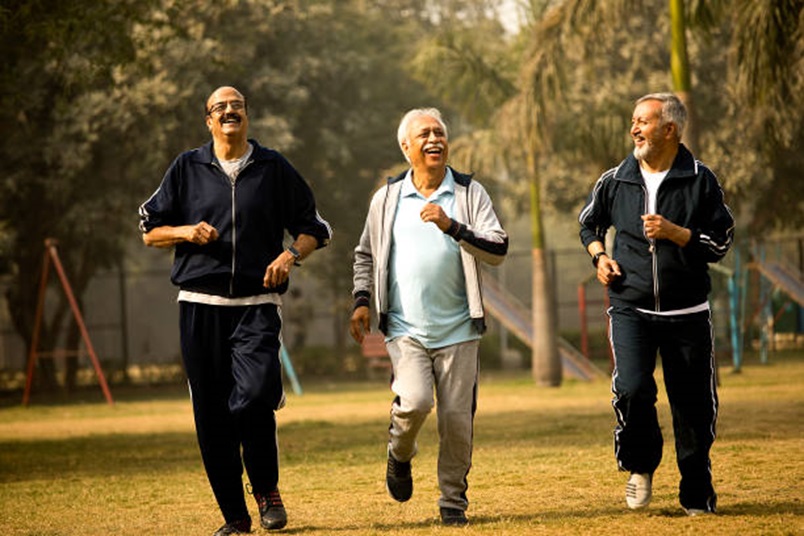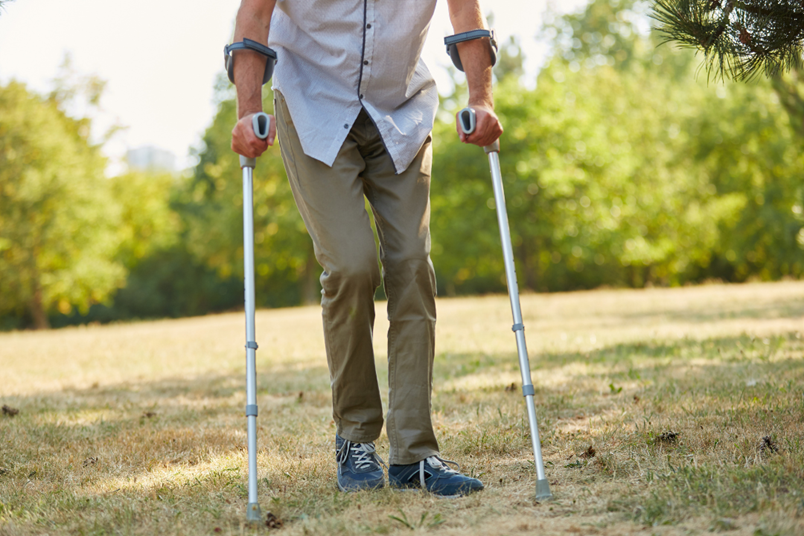Mobility is defined as the ability of a person to move about, which includes actions such as standing up and walking. After a hip replacement or hip arthroplasty surgery, getting back to doing normal chores and activities requires a person to be mobile once again. The strategies taken to help a person become mobile again post a hip replacement surgery fall under mobility strategies. Here, we cover few of the mobility strategies that can help you get on your feet once more after hip replacement surgery.
Hip replacement surgery

In this surgery, the ball and socket part of the hip joint is replaced. A metal implant (stem) and another metal and plastic implant (cup) is inserted in the thigh bone and pelvic bone, respectively. There is a metal head which moves in the plastic cup, relieving pain and improving mobility. Almost 90% of the hip replacement surgeries are performed on older adults above 50 years. There are two types of hip replacement surgeries:
(i) Total hip replacement: This is the most common form of hip replacement in which the whole hip is replaced with a prosthetic joint. In this surgery, femoral head (top) of your thigh bone (femur) and the socket it fits into, called acetabulum is replaced.
(ii) Partial hip replacement: This type of surgery is very rare, in which only a part of your hip gets replaced. These are only done to remove certain types of tumors and hip fractures (broken hips).
Resuming normal life

Resuming normal activities after a hip replacement surgery may seem like a daunting task for many, especially after remaining immobile for long.
To overcome this barrier after initial bed rest and restricted weight bearing, you may require professional assistance.
There are various strategies to improve mobility, including resuming walking and exercise programs used during your stay in the hospital and even after discharge.
As part of effective treatment for improving people’s mobility, exercises in addition to standard physiotherapy is recommended. These exercises focus on balance, walking, and functional tasks while you remain in the hospital. Once discharged from the hospital, the target should be on extra strength and endurance training.
Exercises for your hip

Your surgeon or physical therapist will put you on an exercise and stretches regime as early as 24 hours after the surgery has completed. You will be closely monitored to assess strength and flexibility in your legs and hip and how long you are able to stand and sit.
The exercises you need to follow are centered around strengthening and stretching the muscles around your hip joint. You will be able to slowly resume activities such as climbing stairs, bending, and walking.
The following hip exercises are beneficial after hip replacement surgery:
1. Straight leg raises: Lie on your back. Now, keeping your legs straight, lift alternate legs 6 inches off the floor. Hold till the count of 5 in this position and relax. Repeat 20 times.
2. Hip abduction: Lie on your back, keeping toes pointed toward the ceiling. Now move one leg out to the side as far as possible. Slowly return to the starting position and relax. Repeat with the other leg.
3. Bridging: Lie on your back, bending both knees. Push feet and lift your back. Hold in this position for a count of 5 and then relax. Repeat.
4. Hip adduction: Lie on your side, with the painful side of the hip up. Keeping top leg straight, lift it as high as possible. Hold till the count of 5 and then relax. Repeat again.
5. Hip extension: Lie on your stomach and lift your leg up by putting pressure on the thigh. Hold for a count of 5 and bring the leg down. Relax and repeat with alternate leg.
6. Isometric glutes: Squeeze or contract your buttocks while lying on your stomach. Hold till the count of 5 and relax. Repeat 10 times.
With the help of the above exercises, you will regain your range of motion and strength over time. It may be nearly 6-12 weeks before you can use your hips without any restrictions.
Although you need time to recover after a hip replacement surgery, with proper medical guidance and exercise plan, you will be able to resume daily activities soon. You may have to use a cane or crutches to help you in walking till the time proper balance is restored to avoid unnecessary trips and falls.
Every individual has varying recovery period which is subject to the exercise regime followed. With diligence and care, you will soon find yourself back on your feet!
At KM NU Hospitals, which is the best hip fracture surgery hospital in Ambur, Tamil Nadu, you will find yourself surrounded by expert orthopaedics who are experts in hip fracture treatment. This healthcare facility offers the latest techniques for hip arthritis surgery in Ambur. If you need advice regarding your hip replacement surgery or want to undergo the same, KM NU Hospitals is the right place for you.
Author: Dr. Allen Sunny Deol.S.V
References:
1. Hip Replacement (Hip Arthroplasty). Cleveland Clinic. https://my.clevelandclinic.org/health/treatments/17102-hip-replacement.
2. Total Hip Replacement Exercise Guide. OrthoInfo. https://orthoinfo.aaos.org/en/recovery/total-hip-replacement-exercise-guide/#:~:text=Proper%20walking%20is%20the%20best,regain%20movement%20in%20your%20hip.
3. Your all-you-need-to-know guide on hip replacement surgery. TOPDOCTORS UNITED KINGDOM. https://www.topdoctors.co.uk/medical-articles/your-all-you-need-to-know-guide-on-hip-replacement-surgery.
